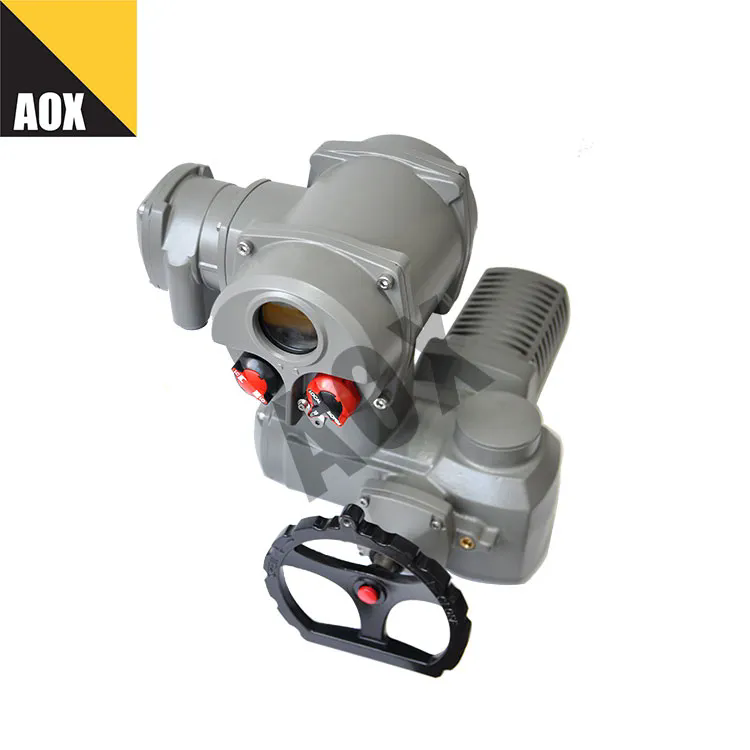The Importance of Motor Operated Multi-Turn Actuators in Industrial Automation
2024-09-24
In the world of industrial automation, precision and reliability are key. Motor operated multi-turn actuators have become integral components in various applications, providing the necessary control and efficiency for a wide range of processes. This blog post will explore what multi-turn actuators are, their working principles, benefits, applications, and how to choose the right actuator for your needs.
What is a Motor Operated Multi-Turn Actuator?
A motor operated multi-turn actuator is a device designed to control the position of a valve or other mechanical systems by converting electrical energy into mechanical motion. Unlike single-turn actuators, which can only rotate a valve or mechanism 90 degrees, multi-turn actuators can complete several full rotations (usually more than 360 degrees). This capability makes them ideal for applications requiring precise control over larger movements.
How Do Multi-Turn Actuators Work?
Multi-turn actuators utilize an electric motor to drive a gear train that translates the motor's rotational motion into the desired output. The actuator's motor can be powered by various sources, including AC, DC, or battery power. The process involves the following steps:
1. Input Signal: The actuator receives a control signal, often from a control system or PLC (Programmable Logic Controller), indicating the desired position or movement.
2. Motor Activation: The motor activates, initiating the rotation of the actuator shaft.
3. Gear Reduction: As the motor turns, the gear train reduces the speed and increases the torque, allowing for controlled movement over multiple turns.
4. Position Feedback: Many multi-turn actuators are equipped with feedback mechanisms, such as encoders, to monitor the shaft position and ensure accurate control.
5. Stopping Mechanism: Once the desired position is reached, the actuator stops, maintaining the valve or mechanism in that position until the next signal is received.
Benefits of Motor Operated Multi-Turn Actuators
1. Precision Control: Multi-turn actuators provide high precision in controlling valve positions, making them ideal for applications requiring exact adjustments.
2. Durability: Designed for industrial environments, these actuators are built to withstand harsh conditions, ensuring longevity and reliability.
3. Versatility: Multi-turn actuators can be used in various applications, including valve control, damper operations, and other mechanical movements across different industries.
4. Remote Operation: Many actuators can be integrated into automated systems, allowing for remote operation and monitoring, enhancing overall efficiency.
5. Energy Efficiency: Electric motor actuators are generally more energy-efficient compared to pneumatic or hydraulic systems, resulting in lower operational costs.
Applications of Motor Operated Multi-Turn Actuators
1. Water and Wastewater Management: These actuators are commonly used to control valves in water treatment plants, ensuring the efficient flow of water and proper treatment processes.
2. Oil and Gas Industry: In this sector, multi-turn actuators manage valves and equipment, controlling the flow and pressure of crude oil and natural gas.
3. Chemical Processing: Multi-turn actuators help regulate the flow of chemicals in processing plants, maintaining safety and efficiency.
4. Power Generation: These actuators are essential in power plants for controlling various valves and dampers, contributing to the safe and efficient operation of power generation systems.
5. HVAC Systems: Multi-turn actuators are used to control dampers and valves in heating, ventilation, and air conditioning systems, ensuring optimal performance and energy efficiency.
Choosing the Right Multi-Turn Actuator
When selecting a motor operated multi-turn actuator, consider the following factors:
1. Torque Requirements: Determine the torque needed for your specific application. This will help you select an actuator with adequate power for the job.
2. Control Method: Consider whether you need a simple on/off control or a more sophisticated position control system. Choose an actuator that aligns with your control needs.
3. Environmental Conditions: Ensure that the actuator is suitable for the operating environment, including temperature, humidity, and exposure to chemicals or corrosive substances.
4. Feedback Mechanisms: Depending on your application, you may require an actuator with position feedback for precise control.
5. Power Supply: Select an actuator that is compatible with your available power sources, whether it be AC, DC, or battery-operated.
Conclusion
Motor operated multi-turn actuators play a vital role in industrial automation, providing precision, reliability, and versatility across various applications. By understanding their working principles, benefits, and applications, you can make informed decisions when selecting the right actuator for your needs. As industries continue to evolve and embrace automation, the importance of these actuators will only grow, enhancing efficiency and performance in modern operations.



